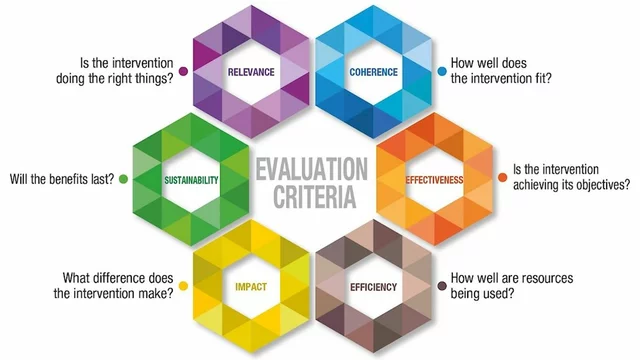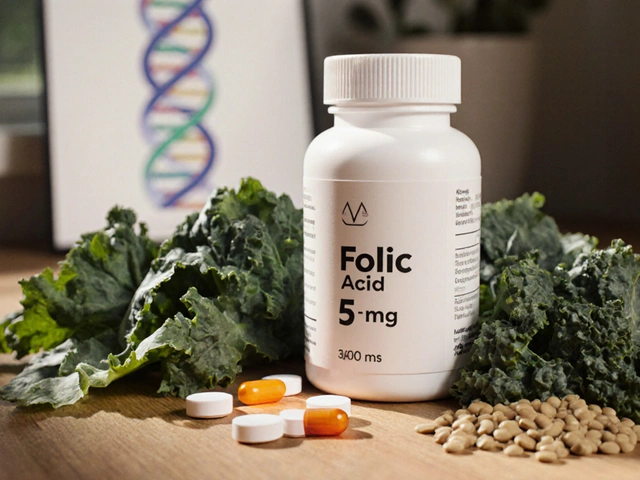
Acetaminophen Safety Calculator
Calculate Your Safe Daily Limit
This tool helps determine your maximum safe acetaminophen dose based on your health status and lifestyle factors.
Current Acetaminophen Intake Tracker
Acetaminophen is the world’s most common pain‑relief and fever‑reducer. When taken as directed, it works well, but even a modest slip‑up can trigger serious liver injury, especially in people who already have Liver Disease. This guide walks you through the numbers you need to remember, the hidden sources that can push you over the limit, and what to do if you suspect an overdose.
Why the Liver Matters for Acetaminophen
The liver metabolises about 90% of every acetaminophen dose. Under normal conditions, most of the drug is processed safely through sulfation and glucuronidation. When you take too much, those pathways saturate and the drug is shunted to the Cytochrome P450 system, which creates a toxic by‑product called N‑acetyl‑p‑benzoquinone imine (NAPQI). NAPQI is harmless while the liver has enough Glutathione to neutralise it. Once glutathione stores drop below about 30% of normal, NAPQI starts damaging hepatocytes, leading to the rapid rise in liver enzymes that defines acetaminophen‑induced hepatotoxicity.
Standard Adult Dosing - The Numbers You Must Know
- Typical dose: 325‑1000 mg every 4‑6 hours.
- Maximum daily dose for healthy adults: 4 g (4000 mg).
- For Tylenol® Extra Strength (500 mg per tablet), the manufacturer‑recommended ceiling is 3 g (3000 mg) per day.
- Toxic dose thresholds:
- Single dose > 10 g (≈20 extra‑strength tablets) - high risk of severe liver injury.
- Repeated dose > 12 g over 24 h - also dangerous.
- Weight‑based: > 350 mg/kg in a single day for adults.
These figures are from the National Center for Biotechnology Information (NCBI) StatPearls 2023 and the Mayo Clinic 2023.
How Liver Disease Lowers the Safe Limit
Anyone with chronic hepatitis, cirrhosis, or fatty liver has a reduced capacity to detoxify NAPQI. Professional societies now advise cutting the daily cap to 2‑3 g, and many clinicians prefer a hard 2 g ceiling for any pre‑existing liver condition.
Adding alcohol makes the problem worse. Even moderate drinking can cut the safe dose in half - from 4 g to roughly 2 g - because alcohol induces the same cytochrome P450 enzymes that generate NAPQI. The UCI Health liver specialist Dr. Ke‑Qin Hu warns that “the 4‑gram limit is very conservative when alcohol is on board.”
Pediatric Dosing - No Guesswork
Children’s doses are calculated by weight, not by tablet strength. The standard is 10‑15 mg per kilogram per dose every 4‑6 hours, with a daily maximum of 80 mg/kg. Toxicity can appear after a single dose of 150‑200 mg/kg in kids aged 1‑6 years. Always use the provided syringe or calibrated dosing cup; kitchen spoons are wildly inaccurate.
Hidden Sources of Acetaminophen - The Sneaky Culprits
Acetaminophen is an ingredient in more than 600 prescription and over‑the‑counter products. Common culprits include:
- Cold & flu combos (e.g., NyQuil, DayQuil, Theraflu).
- Pain combos with opioids (Vicodin, Percocet).
- Menstrual relief pills (Midol).
- Some cough syrups and antihistamines that list “APAP” on the label.
During flu season, patients often stack a regular Tylenol dose with a cold remedy, unintentionally crossing the 4‑gram line. Poison‑control data from UCI Health (2018) show that this pattern accounts for the majority of accidental overdoses.
Quick Calculation Cheat‑Sheet
| Population | Maximum Daily Dose | When to Reduce |
|---|---|---|
| Healthy Adults | 4,000 mg | Alcohol use, chronic liver disease |
| Adults with Liver Disease | 2,000‑3,000 mg | Any liver impairment, hepatitis, cirrhosis |
| Pediatric (≥ 12 kg) | 80 mg/kg | Weight‑based dosing only |
| Pediatric (< 12 kg) | 10‑15 mg/kg per dose | Never exceed 80 mg/kg total per day |
Keep this table handy when you’re looking at a medication bottle or pharmacy label.
Symptoms of Early Toxicity
Acetaminophen overdose often feels benign at first - nausea, loss of appetite, or vague abdominal discomfort. By the time jaundice or dark urine appear, liver damage may already be underway. If you suspect you’ve crossed the safe limit, act fast.

What to Do If You Exceed the Dose
- Call emergency services or poison control. In the U.S., dial 1‑800‑222‑1222; many countries have similar hotlines.
- If you know the exact amount taken and the time of ingestion, share that information. It helps clinicians decide whether to use the Rumack‑Matthew nomogram to gauge risk.
- When the dose is > 200 mg/kg (or > 10 g for adults), start an acetylcysteine (NAC) protocol without waiting for blood levels, as recommended by Dart et al., JAMA Network Open 2023.
- Oral NAC regimen: 140 mg/kg loading dose in a 5% solution, then 70 mg/kg every 4 hours for 17 doses.
- IV NAC regimen: 150 mg/kg over 15 min, followed by 50 mg/kg over 4 h, then 100 mg/kg over 16 h.
Both routes are effective; IV is preferred for severe cases or when the patient cannot tolerate oral meds. NAC is safe in pregnancy, according to WikiEM 2023.
Preventing Overdose - Practical Tips
- Always read the “active ingredients” list. Look for “acetaminophen” or the abbreviation “APAP.”
- Count every source. If you take a 500 mg combo cold medicine, subtract that from your 4‑g ceiling.
- Use a medication diary or a smartphone app that tracks total acetaminophen intake.
- Avoid alcohol completely while you’re on any acetaminophen‑containing product.
- If you have chronic liver disease, ask your doctor to prescribe a non‑acetaminophen analgesic (e.g., ibuprofen, unless contraindicated) or set a strict 2‑g daily cap.
Special Populations
Pregnant patients can safely use standard dosing, but they should still respect the 4‑g limit and avoid alcohol. NAC is recommended if overdose occurs, with no known fetal risk.
Elderly individuals often have reduced liver mass and may metabolise acetaminophen slower. A conservative 2‑g daily maximum is sensible, especially if they take multiple OTC meds.
Patients on enzyme‑inducing drugs (e.g., certain anticonvulsants, rifampin) may need a lower ceiling because those meds boost the cytochrome P450 pathway.
Key Takeaways
- Know the 4‑g “hard stop” for healthy adults; drop to 2‑g if you have liver disease or drink alcohol.
- Check every label - APAP hides in cold, flu, and pain combos.
- Use weight‑based calculations for kids; never rely on kitchen spoons.
- If you exceed the limit, NAC works best when given within 8‑10 hours.
- Keep a simple log or app to stay under the daily cap.
Can I take Tylenol and a cold medicine at the same time?
Only if you add up the acetaminophen from both products and stay below your daily limit. Most cold meds contain 325‑500 mg per dose, so you’ll need to reduce your regular Tylenol intake accordingly.
What’s the fastest way to know if I’ve overdosed?
If you’ve taken more than 200 mg/kg (or > 10 g for an adult) or feel nausea, vomiting, or abdominal pain within 24 hours, treat it as a possible overdose and call poison control immediately.
Is acetaminophen safer than ibuprofen for people with liver disease?
Not necessarily. Ibuprofen can stress the kidneys, while acetaminophen stresses the liver. The safest route is to use the lowest effective dose of either drug and discuss alternatives with your doctor.
How does alcohol change the safe acetaminophen dose?
Alcohol induces the same liver enzymes that convert acetaminophen to NAPQI, cutting the safe daily limit roughly in half. If you drink any alcohol, aim for no more than 2 g (about half a standard bottle of Tylenol) per day.
When should I start acetylcysteine after an overdose?
Ideally within 8 hours of ingestion. It remains beneficial up to 16 hours and can still reduce liver damage even later, though the effect diminishes.
15 Comments
Write a comment
More Articles

Understanding the contraindications of brinzolamide use
As a copywriter, I've learned that understanding the contraindications of brinzolamide use is crucial for patient safety. Brinzolamide is an eye medication used to treat glaucoma, but it's not suitable for everyone. Some people may have an allergy to the drug or its ingredients, which could cause severe reactions. Additionally, those with kidney problems or certain other medical conditions should avoid using brinzolamide. It's important to consult a healthcare professional before starting any new medication to ensure it's the right choice for you.

Arrhythmias and Left Ventricular Failure: Understanding the Link
Exploring the crucial link between arrhythmias and left ventricular failure, this article delves into how irregular heartbeats can impact heart function. It provides insights on identifying symptoms, understanding underlying causes, and emphasizes the importance of timely medical intervention. Practical tips are shared for managing related conditions, focusing on lifestyle changes to support cardiac health. Recognizing and addressing these heart issues is vital for maintaining overall well-being.


Diane Holding
October 25, 2025 AT 18:31Keep a medication diary to stay safe.